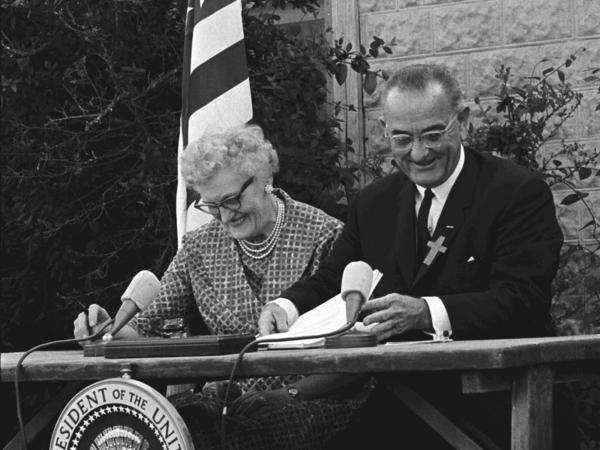Is There a Third Way for ESEA?

Last month, a highly polarized debate waylaid a House vote on the federal government's most important education legislation: the LBJ-era Elementary and Secondary Education Act (ESEA). Known since 2002 as No Child Left Behind (NCLB), it provides more than $13 billion annually to support education for disadvantaged children.
The law authorizing NCLB was set to expire in 2007, but Congress, unable to agree on amendments, has extended it year after year. Public schools in big cities and other beleaguered localities depend on the money from NCLB, so it can't be repealed. Nobody likes the way it works now, but agreement on something else is elusive. Senate Committee Chair and former Education SecretaryLamar Alexander announced an early deadline for a bill this year, but an effort at bipartisan discussions has slowed the process down. The Senate HELP committee is expected to see a draft for mark-up this coming week.
As members of very different "camps" on school reform, we think there is more common ground than has yet been evident in the political process. Last summer, we were part of two distinct groups of scholars and policy experts that met separately to rethink educational accountability -- both motivated by concerns that NCLB's approach has increasingly undermined school improvement and equity.
These groups came from what most would consider different ends of the political spectrum, and there was no reason to expect them to draw similar conclusions. So, when we read each other's reports (see here and here), we were surprised by the extent of agreement.
We agreed, for example, that, while tests are important as a way of keeping track of student learning, and identifying problems in a timely way, they are taking up too much time in many schools and when used alone can give a distorted picture of what children are learning and where improvement is needed.
We agreed that measures should focus on the skills needed for college and careers, including students' abilities to learn and solve problems independently, not just what is easiest to test. We also agreed that these measures need to be considered in the light of other information -- like completing high-quality courses of study and progressing toward graduation -- when schools and students are evaluated.
We agreed that, because a student's learning in any one year depends on what was learned previously and on the efforts of many professionals working together, the consequences of high and low performance should attach to whole schools, rather than to individual educators.
We agreed that public officials have a responsibility to intervene when a group of students are not learning what they need to successfully finish high school and connect to a productive future, but we also agreed that actions should be based on a thoughtful diagnosis of the school's resources, staffing, and practices, and of the alternatives available to children, rather than mechanically chosen from a pre-determined list of consequences.
Finally, we agreed that if schools are to be held accountable for results, their leaders must have sufficient authority, flexibility, and resources to make decisions on spending, staffing, and instructional methods. Meanwhile state and district officials have a responsibility to support the necessary capacity and resources to allow schools and students to succeed.
These agreements differ from current practice under NCLB, which doesn't consider how schools function or how students are progressing beyond test scores, ignores capacity-building, and often constrains improvement.
Starting from these points of agreement, members of the two groups have produced a new report (available here and here) that addresses the design of accountability for the pending reauthorization of ESEA. Key factors include:
Starting from these points of agreement, members of the two groups have produced a new report (available here and here) that addresses the design of accountability for the pending reauthorization of ESEA. Key factors include:
Support for innovation and improvement: An accountability system must include ways to measure results, make judgments about performance, and effect meaningful changes. At a time when many children are not learning all that they need, when knowledge is expanding and changing, and when none of the many ideas about how to improve schools is proven best under all circumstances, an accountability system must leave room for innovation and experimentation.
These goals cannot be achieved simply by labeling schools or insisting on higher performance. Public officials also need to do their part, eliminating regulations that hamstring problem solving, and encouraging improvement in teaching methods and supports for students. Though accountability can't wait until every school is ideally staffed and equally funded, officials need to fix policies that cause gross inequalities in school spending and educator capacity.
Appropriate Assessment: Regular assessment provides useful information about what individual students are learning, and how well different groups are doing. Parents and officials need this information to know what's working and what must be fixed. But as we have seen in the NCLB era, when bubble tests are overused or Is There a Third Way for ESEA? | Linda Darling-Hammond:
